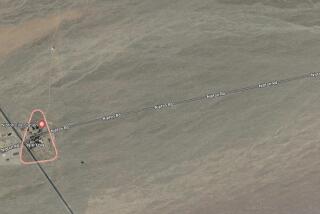Preliminary findings in Kobe Bryant helicopter crash could come next week
The next crucial step in the investigation of the the helicopter crash that killed Kobe Bryant, his daughter Gianna and seven other people should occur next week, when the National Transportation Safety Board is expected to release some preliminary findings.
NTSB investigators have spent days at the scene, collecting the remains of the chopper and other evidence, and have said they will share what they have learned in the coming days. But that will not be the final report on the cause, which is expected to come months later.
What has the NTSB said so far?
FINAL MOMENTS: From the beginning, officials have said foggy weather will be part of the investigation.
NTSB investigator Jennifer Homendy said at Tuesday’s news conference that the helicopter was at 2,300 feet when it lost communication with air traffic controllers. The helicopter was descending at more than 2,000 feet per minute at the time of impact.
“So we know that this was a high-energy impact crash, and the helicopter was in a descending left bank,” Homendy said.
The chopper hit the hillside at an elevation of 1,085 feet, about 20 to 30 feet below an outcropping of the hill. But even if the pilot had been able to fly above the hilltop, he would have faced new hazards ahead.
“There are actually other higher hills surrounding it,” said Bill English, a lead investigator.
Just before crashing into the hillside, the pilot rapidly ascended to avoid a cloud layer, according to the NTSB.
Nine people, including Kobe Bryant, were killed when a helicopter crashed and burst into flames in Calabasas.
TERRAIN SYSTEM: The NTSB has said the chopper was not equipped with a terrain alarm system that could have warned the pilot he was approaching a hillside.
Homendy said her agency had recommended 16 years ago that the Federal Aviation Administration require all choppers carrying six or more passengers be equipped with a terrain awareness and warning system, adding that the FAA has “failed to act” on the proposal. Because the FAA didn’t follow the recommendation, the chopper that crashed Sunday was not legally required to have the system.
Shortly after her Tuesday news conference, an FAA spokesman disputed that assessment, noting that the FAA requires the terrain alarm systems for helicopter air ambulance operations.
What is the narrative we know so far about the flight?
The helicopter — a Sikorsky S-76 chopper built in 1991 — departed John Wayne Airport in Orange County at 9:06 a.m. Sunday, according to publicly available flight records. The aircraft passed over Boyle Heights, near Dodger Stadium and circled over Glendale during the flight. The NTSB database shows no prior incidents or accidents for the midsize helicopter.
Homendy said the pilot, Ara Zobayan, requested special visual flight rules, or VFR, which allow pilots to fly visually in controlled airspace when ceilings are less than 1,000 feet or when visibility is less than 3 miles, during the trip to Ventura County because weather conditions had deteriorated.
At some point during the flight, the pilot requested “flight following,” a process in which controllers are in regular contact with an aircraft and can help them navigate, according to recordings of radio communications between the air tower and the aircraft.
Before the conversation ends, the tower is heard telling the pilot the helicopter is too low for flight following. Radar data indicate Zobayan, who had been a licensed commercial helicopter pilot for 19 years, guided the copter to 2,300 feet and then began a left turn. The helicopter then began rapidly descending.
Where is the investigation heading next?
The NTSB team is getting help from the FBI, but officials stress this is not a criminal investigation. The probe is looking at weather and the helicopter’s mechanics as well as the record of the pilot and the company that owns the aircraft, all of which are standard.
Is there any federal legislation pending?
Yes.
A Los Angeles congressman is calling on the FAA to beef up chopper safety regulations by requiring terrain alarm systems in all helicopters.
Rep. Brad Sherman (D-Northridge) on Thursday introduced the Kobe Bryant and Gianna Bryant Helicopter Safety Act. In a statement, Sherman said such equipment would prevent tragedies such as the one that killed Bryant and the others and would cost between $25,000 to $40,000.
His bill calls for helicopters to be “equipped with a Terrain Awareness and Warning System. The legislation will also establish a commission on helicopter safety and require a report to Congress on best practices for helicopters in cases of low visibility,” according to a statement.
More to Read
Sign up for Essential California
The most important California stories and recommendations in your inbox every morning.
You may occasionally receive promotional content from the Los Angeles Times.












